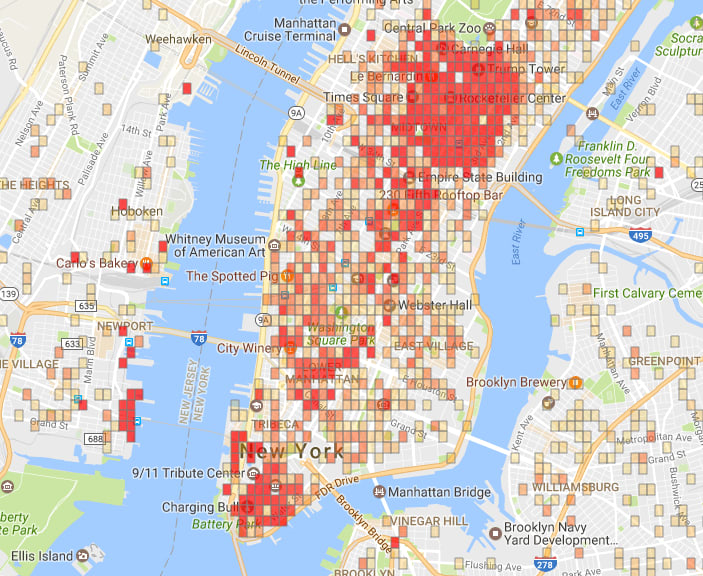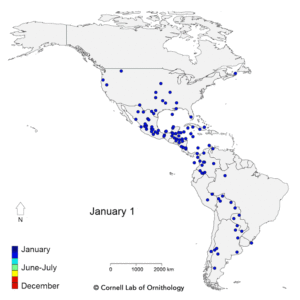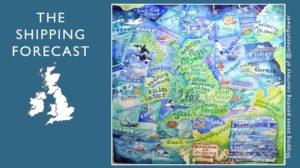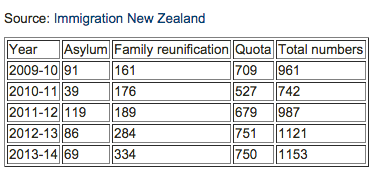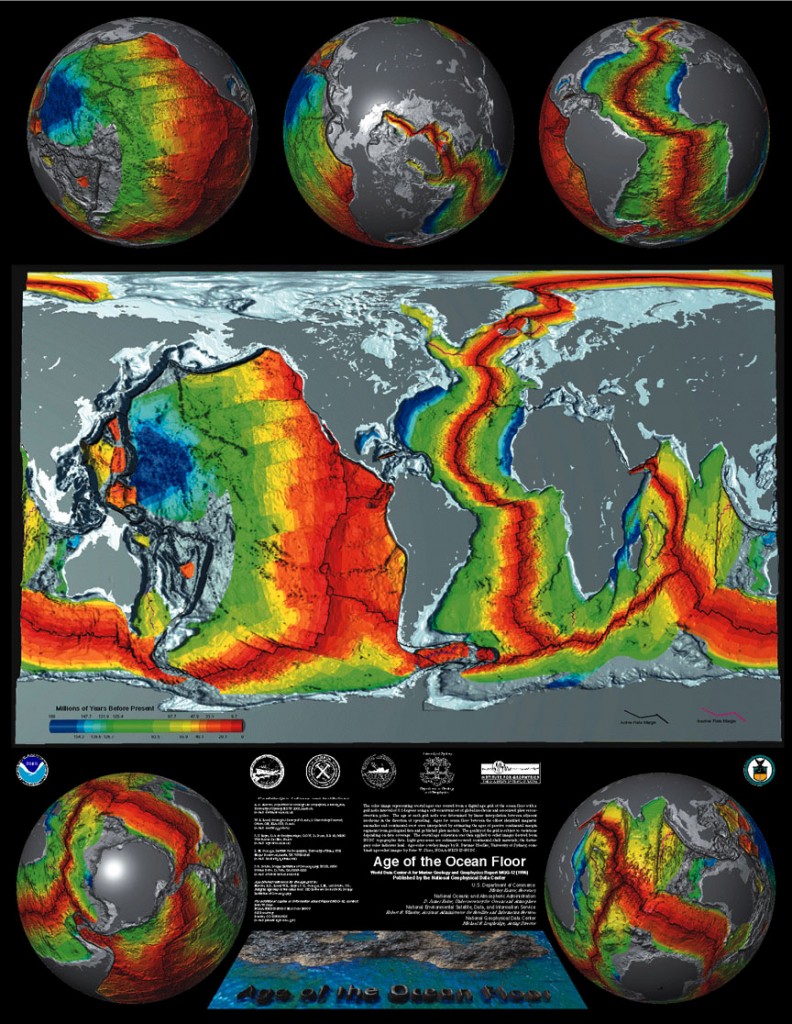Simplifying to make a picture
1. Ancestry.com has maps of the ancestry structure of North America, based on people who sent DNA samples in for their genotype service (click to embiggen)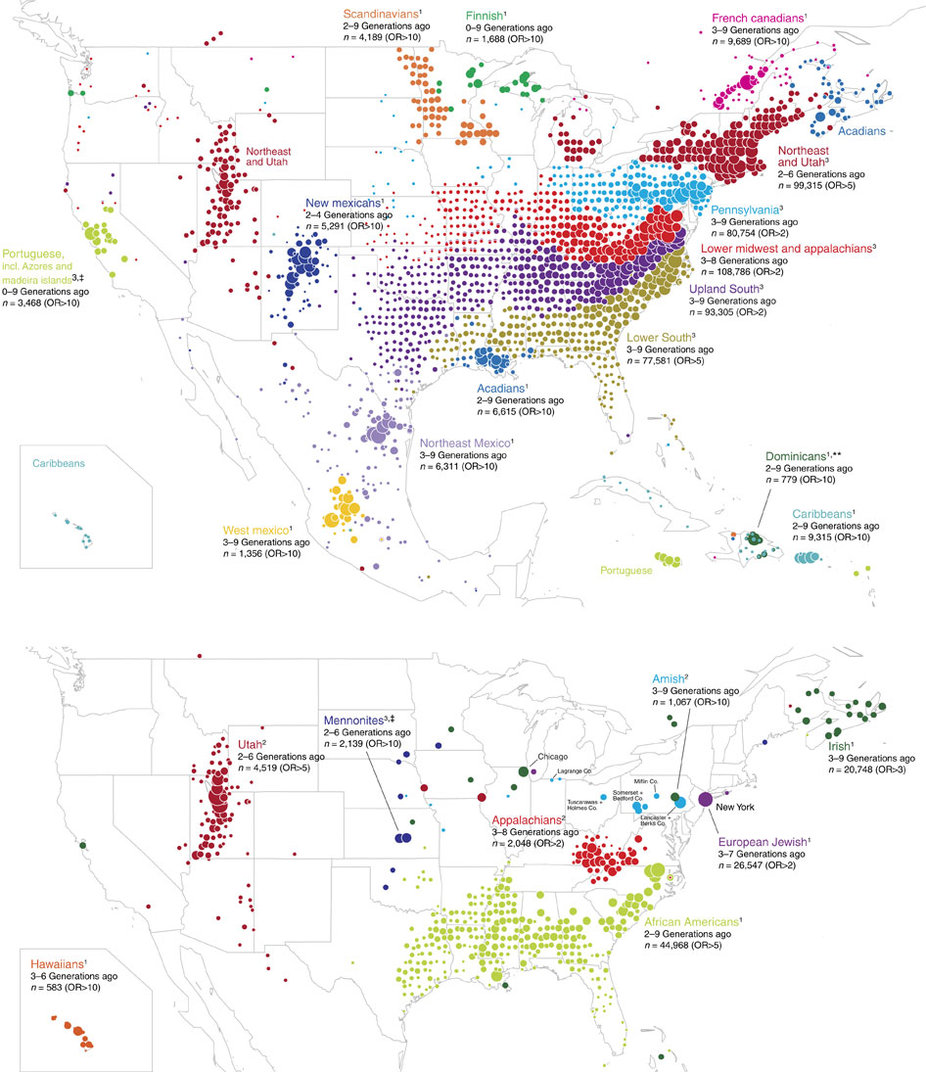
To make these maps, they looked for pairs of people whose DNA showed they were distant relatives, then simplified the resulting network into relatively stable clusters. They then drew the clusters on a map and coloured them according to what part of the world those people’s distant ancestors probably came from. In theory, this should give something like a map of immigration into the US (and to a lesser extent, of remaining Native populations). The map is a massive oversimplification, but that’s more or less the point: it simplifies the data to highlight particular patterns (and, necessarily, to hide others). There’s a research paper, too.
2. In a satire on predictive policing, The New Inquiry has an app showing high-risk neighbourhoods for financial crime. There’s also a story at Buzzfeed.
The app uses data from the US Financial Regulatory Authority (FINRA), and models the risk of financial crime using the usual sort of neighbourhood characteristics (eg number of liquor licenses, number of investment advisers).
3. The Sydney Morning Herald had a social/political quiz “What Kind of Aussie Are You?”.
They also have a discussion of how they designed the 7 groups. Again, the groups aren’t entirely real, but are a set of stories told about complicated, multi-dimensional data.
The challenge in any display of this type is to remove enough information that the stories are visible, but not so much that they aren’t true– and not everyone will agree on whether you’ve succeeded.
